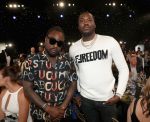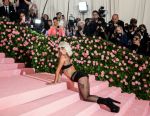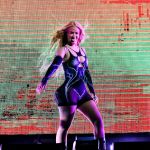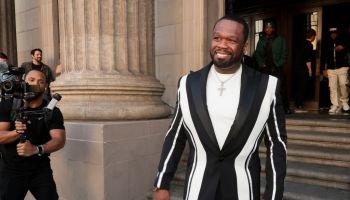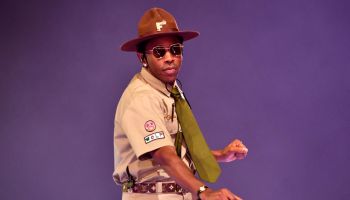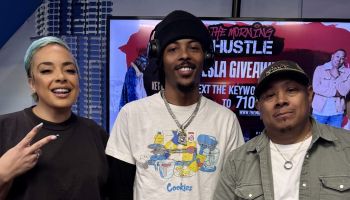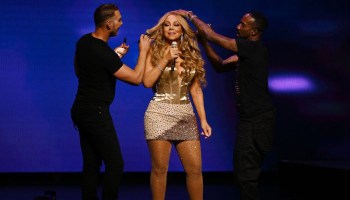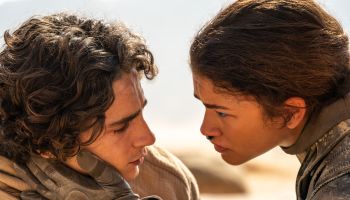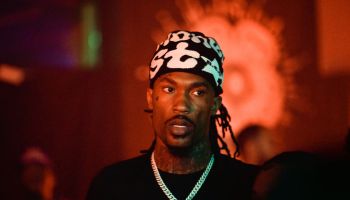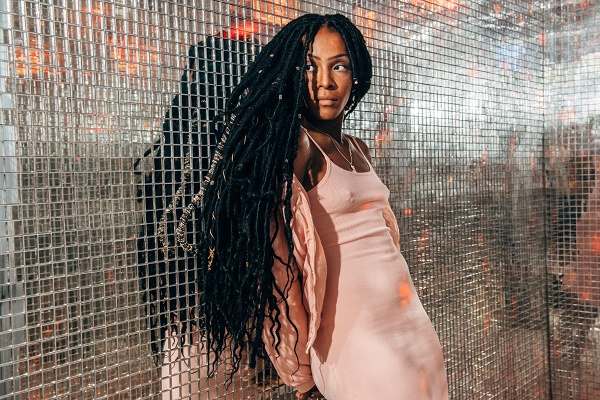
Talking to Dawn Richard — now known as D∆WN — you get the feeling her life jumped off the pages of a manga and is preparing to be made into an anime.
She was the cute, quiet girl whose head was always in a book and whose conversations were speckled with literary references. Fast-forward a few years and now she’s an idol (what anime fans call pop stars) that everyone is clamoring about. As you talk to her, you realize she’s still that same girl, but the bookworm has turned into a butterfly.
Que the giant robots.
Following her foray into the music business, reality shows, tabloid fodder, and friction with band members, D∆WN has gone solo. Her life plays out like an arc out of a pop idol anime, but it’s no coincidence that it was her embracing her geekiness that solidified her success. Making the Band gave her a platform and Danity Kane gave her an outlet, but D∆WN had always had her niche.
Geeks are a very savvy bunch — just ask any marketer. So it’s no surprise her music and shows give nods to the various forms of literature that have influenced her life. Her song titles are derived from mythology and her art has an anime flair. She enjoys gaming and was once even working on her own manga series, which later became the name of her popular Making the Band group.
Could she be more geek?
We spoke to D∆WN before her Red Bull Sound Select performance last Tuesday (August 16) and chatted about her influences, her upcoming album, and how she has been able to make her geekiness her power.
TUD: So you’re doing Red Bull Sound Select tonight.
D∆WN: Yes, I’m doing Sound Select tonight. It’s the last leg of the tour and I’m excited because we’ve been doing New York for, like, forever. I feel like I come to New York every other weekend and perform. We love it out here, so I’m excited to come out here and finish where I started.
Let’s talk about your new album. What exactly is The Red Era?
I call it Redemption Heart; from the trilogy Goldenheart, Blackheart, and Redemption Heart. I shortened it by calling it Redemption because Redemption Heart is so long to say and it’s the final. I call it The Red Era because every era has a color and it’s the era of the color red for this project. The color red itself invokes freedom and the redemption of this final chapter of this trilogy, and I’m really proud of this piece of work because it really is my second line, as you would say in New Orleans.
It’s my dance and my celebration of recognizing and celebrating myself and my flaws and everything else that comes with it. And accepting the imperfections of who you are, but also embracing that that’s beautiful in its own right and telling the movement that’s been along on the ride with me that they are beautiful as is. Whether they are gay, straight, gender fluid, brown, blue, green, that it was never anything but about the fight that they endured, and we kinda get to dance in that revelation — that what they are in this very moment is perfect.
Your projects have had an anime-type feel to me. Do you deliberately have them set up that way?
(Laughs) Yes. Of course. It’s totally deliberate. I grew up with anime and with animation and with literature and in art, and that was the respect and the homage to those things. The whole point was to tell a story and do it in this three-part series and I felt like color evokes emotion and I wanted people to have their favorites and gravitate to what changed them and made them feel a certain way and whatever album motivated them. I purposely had albums that had different sounds, different stories, so people could choose their favorite depending on the point in their life they are going through.
Some people will love Goldenheart the most because during that time that story there’s that sense of a naïve warrior and that grandeur and a kind of cinematic feel for them made sense. Some people will love Blackheart more because they are going through a fall right now. They’re going through a dark place and they need something to guide them to the light. And Redemption Heart, to me, is my favorite because it’s this kind of sense of peace, you know? It’s like I know who I am and I know where I wanna be and where I wanna go and for those who have come to this realization that they are better at the end of their journey, they may love this album. So the point was never to make the same album three times. The point was never to do the same sound three or four times and it was never to stay in the same place. It was supposed to be about growth and evolution and change and that’s what this process has been about.
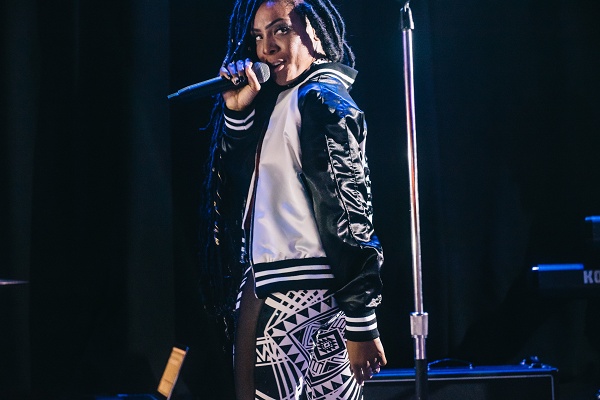
I’ve read Prince was a big influence on you.
I think the affinity for Prince is just next level for me because this man could put out an album every Thursday, he had so much material, and he never cared about the presentation. Like, he would do an album that was 30 tracks in and then like four weeks later he would do a gospel album or a spiritual album and then next week he’d do a disco or a funk album. He was so versatile and played every instrument and he was such an artist that he never had to be confined and people started to get used to it because it was the status quo for him. He never was one thing and you got so used to him never being just one thing that you knew he could do anything. There’s an appreciation for that, especially with him being a Black man and being able to delve in pop and delve in rock, delve in funk, delve in inspirational. You know? He could have sexuality and be sensual but still write an album about God and write an album about rising again and invoke passion of gospel and spirituality, and I think that’s something beautiful.
There’s a hint of that within all of my albums as well. There’s these layers upon layers that if you dive deep enough you’ll find there’s a huge message inside. So it’s really about people and there’s so many layers that it dictates to everyone. It’s as dense or as deep as you want it to be and I think that’s the point. If you are spiritual, there’s something inside there for you. For those who just care about the art of dance, there’s something inside there for you. For those who just want to dance and don’t want to look deep inside it as others, there’s something there for them, too.
One thing that definitely jumps out is that even though you planned this to be a series and it was done so deliberately, each project was very different from the others, yet there was still that line which ran through all of them and kept them essentially D∆WN. Each project was showing a very different side of a different creative space, if those are the right words.
[Laughs] Yeah. That was perfect. And it’s because I’m changing. I’m growing. That was the point. The idea was concrete but me as a person wasn’t. So as I evolved, so did the sound. I know I wanted three albums to be different distinctly because I know a woman changes, but I had no idea how the sound would evolve. The only thing I was sure of was that the sound would change, but I had no clue where the sounds would take me. But the story, the cyclical story of us going into life, falling and recovering, is ages old. Those stories have been being told since mythology. Since the times of the Bible. Since parable times. The story of a voyage or a quest of a prophet. If you’re talking about the prophet Muhammad or you’re talking about the Koran or you’re talking about Buddhism or you’re talking about Jesus or you talk about any religion, any spiritual voyage, there is always this story of this prophet or this person who goes on this quest and who falls and then they find the light in some way, shape, or form.
Again, it’s the story of spiritual choices that do it or the stories of Shakespeare or Edgar Allen Poe, the writers who I love that gives the character a voyage or quest. Like the Odyssey or the Iliad. All these big stories have the story of the quest of a strong warrior who has to seek out their purpose and who finds themselves in hurt and loss and find that there is a light at the end of that. And I knew that was concrete because I knew those stories are there. But they are all told differently and they are all told in their own way. And that’s what I didn’t know was that sound and how it would evolve. That’s what I was searching for and found.
I don’t know if you would consider yourself a nerd or a geek but …
I love that. It’s a compliment.
I did notice some of the titles of your songs, like “Calypso,” “Titans,” “Phoenix,” and “Goliath,” have ties into varied mythos. Is that something that is also deliberate or was that just something that came out because it’s a part of you?
I think it’s a bit of both. You know, my past growing up with the literature that I read, it’s also through me getting inspiration from art and different things. Like Goldenheart, Gustav Courbet was a huge inspiration for me. Baryshnikov was another as a dancer, the gracefulness and the regalness of that entire era was built off that and built off that story line. Blackheart was again inspired from Alice in Wonderland. The whimsical fall like Edgar Allen Poe and Tim Burton and those influences. Like a twisted fall that happens. All these things are from my past. I grew up in a library. I grew up reading that story so those influences are there but the future sound and the sound choices (are there, too). I know I wanted to incorporate different genres of music and that comes from the influence of being with Dirty Money and Danity Kane and Puff and pop music. I started in pop music. I started in that vibe and then I went into an electronic type of funk, hip-hop soul kinda thing with Dirty Money. So the influences, sonically, were already there and then my own influences from when I grew up listening to alternative rock. I had all of these influences when I started and I kinda just incorporated all of those things because I knew I could. I knew it was a lot and I knew it would be hard for some people to retain coming from where I came from but they were all there, I just had to put the components together to make it make sense, because I was all those things.
And that explains a lot about your sound and just the way you put things together. You mentioned listening to alternative rock growing up, and I know you’ve also mentioned Bjork was one of your influences.
Yes, Bjork was groundbreaking for me. I don’t think it was just because of her vocals, which were amazing to me; it was choice of placement, like song placement and lyrical content which is so moving to me. But beyond that it was her visual aesthetic. I mean, her videos now will still be looked at just like Missy Elliot’s videos. For that matter, they will be timeless, they are never old. If they get played right now they would still be relevant and that’s something I have always been attached to. And Bjork’s relationship with Chris Cunningham was just insane to me and even his work with Aphex Twin. It was just different and I couldn’t place my finger on it but it was just uncomfortable, it was scary, it was weird, and the choice of using robotics in the ’90s was just groundbreaking to me. I wanted that type of style. I gravitated to that because that was beautiful and that’s again that appreciation for art. I never knew that years later I would incorporate that into my own music. I was just a fan of the art. I just thought it was dope. As I got older I realized how much of an affect it had on me.
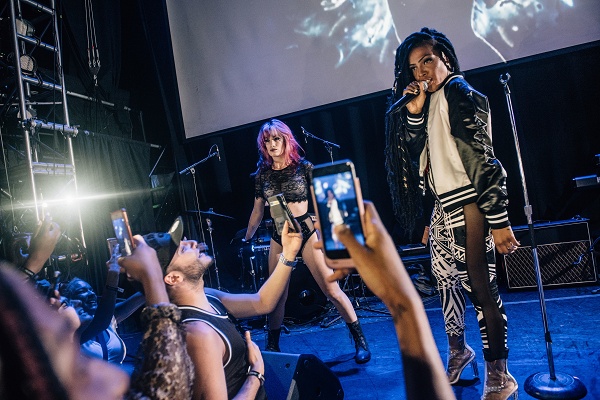
One of my favorite songs was and still is “Venus As A Boy” by Bjork, and as a teenager living between Staten Island and Brooklyn, people would ask me what I was playing and giving me strange looks.
I think for other people who don’t understand that sound they might say that. But I think to each his own and I think that’s the issue with the industry — period. It’s that if it is different, people associate it with you have to think different to understand it, and to be honest, I think you were thinking quite right on it. You thought something was amazing and you gravitated towards it. I just think there are people who see the world in different eyes and I don’t think they are thinking differently, it’s just their normal. They’re just different types of people seeing things in a different perspective but they aren’t thinking differently. They’re just thinking the way their eyes show them.
That’s why I think it’s beautiful that you can have certain people relate to you and I think that’s why Bjork was the artist she was. That’s why Bjork, to me, wasn’t this massive thing in the States, because a lot of people have the ability to see the way she saw it and I think she’s OK with that because she’s an icon in her own right and I think what she’s managed to do she will always be known as that visual artist. You have to realize that when you think out of the box, you have a set of eyes that see the world in a different color. You may not have the fan base or the looks that might be on a massive level, but your brand and your art will change the game in the future because people will go years later. I think people right now are just understanding the full effect of what Bjork was and she’s what 50-something years old? So again, I think it took Prince to die for people to really see the ability of what he really was. I think that can go on and on and on. You take a look at David Bowie and see where he was and it took him to die for people to get how incredibly insane and incredibly talented he was.
And just like you were saying about Bjork’s visuals, you’re no slouch. In some of your videos you can actually see some of the anime influence or the geek influence. For example, “Calypso,” to me, had a very Ghost in the Shell, Masamune Shiro feel.
Yes, it was Ghost in the Shell. It’s definitely a manga approach. A bubbly Japanese animated kinda introduction into my affinity for anime and that was the point. I love Korean culture. I love Japanese culture. K pop, Harajuku, what they bring to the table and that was a prime example of introducing the anime culture into my videos. I had already been messing with it a bit when I was with Danity Kane, but that was then; I felt purposefully that song invoked that whole style.
Yes, that and the “Paradox Effect.”
Oh yeah, that. That’s a video game. That’s straight video game there. Straight Final Fantasy. That was what I grew up with. I had to, that was, like, the first … I knew I had to do a video like that.
Yes. As soon as I saw the armor, the geek in me was like, “Yoooo!” I mean, even with the new stuff you’re doing, I saw the virtual reality experience that you did.
Yeah, the VR piece.
How did that come about? What was the process for something like that?
I knew I wanted to do some type of VR piece around two years ago. VR is very expensive so we had to find a company that was willing to work with an independent artist like me because no one besides Bjork and Run the Jewels were doing VR at that time. And those are two major artists. So it took a lot of work and it was like six or seven months of just pounding and pounding to really get things together to be able to create that. I am the first African-American female independent artist to do a VR video. And that’s major, but again, I knew I wanted to do it. I didn’t know it was going to be so much work, because it’s still fairly new. So that was interesting, trying to break that gap and figure that all out, but in the end … man, was it worth it.
It was really cool and not only did we do a VR piece, we did a TV companion piece, too, to go with it so people can see both, react to both aspects of it. So you’re able to see choreography and dance in VR. Which is pretty ahead of the game because people don’t even have VR headsets yet. It’s still just being handed out so we are still ahead of the game. And it’s fun because, like mainstream or indie, we’re among the few to do it and we don’t even have a budget. We’re like this small little group of people and it’s such a new thing that most people didn’t even grasp what we did because no one’s doing it yet. So it’s going to be interesting to see in the next two or three years, as more and more people use VR, and then say, “Oh, this is ground breaking.” But we’re the first and it’s going to be funny to watch because we’ve already done it and that’s an exciting feeling to have for ourselves. You know, I don’t care if the rest of the world doesn’t understand it or see it, but as a geek that’s what made me really happy. I was really excited about that part of it because we really are doing some awesome sh*t with shoestring budgets and that can’t be taken away from us.
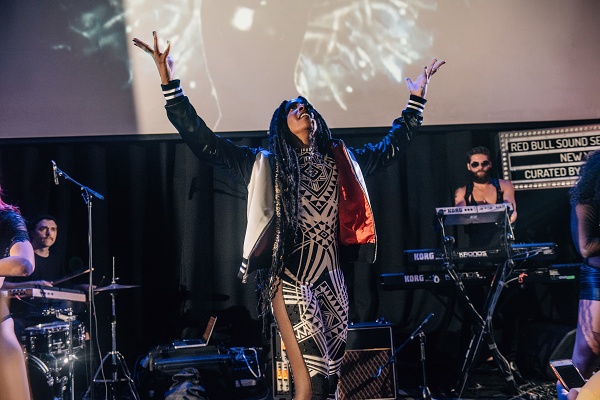
I’ve heard a lot about “Cali Sun.” It’s supposed to be animated right?
It’s not entirely, like this is not a video. I was researching and looking at iTunes and then I saw the visualizer iTunes has. And you know when you put on the visualizer for iTunes it’s just these streams of lasers and I thought it would be really cool if my song had its own visualizer. So now when you click the record you can play the visualizer and it has its own animation. And this is the first project that I have helped animate myself because I have been doing work with Adult Swim, so I wanted to keep with that theme. Now I’m doing actual experiences and each time we release something we do something a bit different than we did the other one. So instead of doing a VR piece or something else because we have already done an animated thing, I thought it would be dope to do an animated visualizer.
What can we expect from your new project?
It’s coming out this fall, but this is the first time I am going to not say a lot. I’m just going to let the album do what it does. I do have features on this album but they’re not the features that people think they would be. I really wanted to resonate with my New Orleans roots, so I’ve only incorporated New Orleans artists on this album. That was the theme of everything. I normally don’t do features anyway. That was never really my style, so there’s that. But other than that, I think I am just happy to see this entire project, for those who said it wasn’t possible, finally come to fruition and it will be done. This will be the most innovative release I’ve ever done and I’m very proud of that. I feel like if I was going to do the finale it was going to be something that was quite beautifully done and a bit different than my other releases.
I hope people can resonate with this album in a strong way because that would mean people are coming into their own redemption. They’re coming into their own and they want to really dance because there’s a lot of anger and a lot of heartache in people right now, and I hope that this will be the light to lift them to go where they need to go. Because it’s all about the recovery and I think that’s where the sound of this album feels like. It’s appreciating what we are now. What we are at our best, which is ourselves and that’s what this sound invokes. Again, New Orleans is the base line for this so you will hear a lot of cadence, a lot of Afro-Cuban feels, but also because I’m working with Machinegun (you will hear) intricate aggressive electronic cadences that still play in that electro world, but there’s that underlying of that lyric, that choice of freedom that will be that underlying line of freedom for this entire album.
SOURCE: YouTube | PHOTO CREDIT: Ryan Muir, Red Bull Content Pool
Dawn Of A New Day: A Conversation With Dawn Richard About How Anime Helped Propel Her Career Post Danity Kane was originally published on theurbandaily.com





